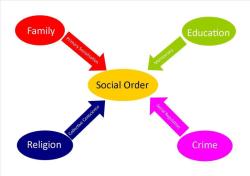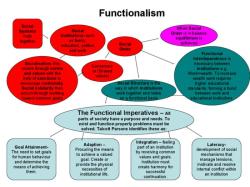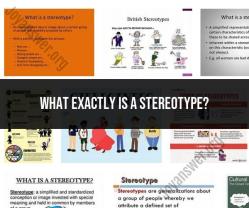How do symbolic interactionists explain gender roles?
Symbolic interactionism is a sociological perspective that focuses on the role of symbols and interactions in shaping individual behavior, social structures, and the construction of reality. When it comes to gender roles, symbolic interactionists examine how people interpret, negotiate, and perform gender through everyday interactions, symbols, and language.
Here are some key insights and perspectives from symbolic interactionism regarding gender roles:
Meaning-Making: Symbolic interactionists emphasize the importance of meaning-making in social interactions. They argue that gender roles are not inherently fixed or predetermined but are constructed and negotiated through social interactions. Individuals learn and internalize gender norms, identities, and behaviors through interactions with others, including family, peers, media, and institutions.
Symbolic Representations: Symbols, such as clothing, language, gestures, and cultural artifacts, play a crucial role in the construction of gender roles. Symbolic interactionists examine how gender is symbolically represented and reinforced in society through cultural practices, rituals, and media portrayals. For example, clothing styles, colors, and accessories are often imbued with gendered meanings and serve as symbols of masculine or feminine identity.
Role-Taking and Identity Formation: Symbolic interactionists emphasize the process of role-taking, wherein individuals adopt and internalize social roles based on their interpretation of others' expectations and reactions. Gender roles are learned through role-taking experiences, where individuals observe and emulate the behaviors of others perceived as masculine or feminine. These interactions contribute to the formation of gender identity and the development of self-concept.
Gender as Performance: Building on the work of Erving Goffman, symbolic interactionists view gender as a performative act. Individuals engage in gender performances, consciously or unconsciously, to communicate their gender identity and conform to societal expectations. Gender performances may vary across different social contexts, and individuals may strategically modify their behavior to fit or challenge gender norms.
Socialization and Reinforcement: Symbolic interactionists emphasize the role of socialization processes in transmitting and reinforcing gender roles. From an early age, children are socialized into gender-appropriate behaviors, roles, and expectations through interactions with caregivers, peers, and the broader social environment. These socialization experiences shape individuals' understanding of gender and influence their future behavior and identity.
Overall, symbolic interactionists highlight the dynamic and socially constructed nature of gender roles, emphasizing the role of interaction, interpretation, and meaning-making in shaping individual experiences and societal norms related to gender. By examining how gender is constructed and negotiated in everyday interactions, symbolic interactionists contribute valuable insights into the complexities of gender identity, inequality, and social change.
How do symbolic interactionists interpret and analyze the concept of gender roles?
Symbolic Interactionism and Gender Roles: Unveiling the Performance
Symbolic interactionism, a sociological perspective, offers a unique lens through which to understand gender roles. Here's how it approaches this concept:
Core Tenets:
- Meaning-making: Symbolic interactionism emphasizes that meaning is socially constructed through interaction and communication. Individuals interpret symbols (including societal norms, expectations, and representations) and assign them meaning based on their social context.
- Self and Identity: The self is not a fixed entity but rather a dynamic and ongoing process shaped through interactions with others. Individuals internalize societal expectations and develop a sense of self based on the messages they receive regarding their gender.
Gender Roles through Symbolic Interactionism:
- Learned Performances: Gender roles are not innate or biologically determined but rather learned through various forms of social interaction. Individuals learn what behaviors, attitudes, and expressions are associated with masculinity and femininity within their specific social environment.
- Negotiation and Agency: While individuals learn gender roles, they are not simply passive recipients. They actively negotiate and interpret these roles, potentially conforming to, reinterpreting, or even resisting them. This negotiation shapes their sense of self and how they express their gender identity.
- Symbols and Socialization: Symbols play a crucial role in transmitting and reinforcing gender roles. These symbols can be:
- Verbal: Language, including pronouns, terms of address, and gendered language (e.g., "strong" for men, "caring" for women).
- Non-verbal: Clothing, hairstyles, body language, and societal expectations associated with these aspects.
- Media representations: Portrayals of gender roles in movies, television shows, and advertising can significantly influence social perceptions and expectations.
Criticisms and Considerations:
- Overemphasis on Agency: Some critics argue that symbolic interactionism might overemphasize individual agency in shaping gender roles, potentially neglecting the powerful influence of social structures and power dynamics that can perpetuate inequalities.
- Limited Scope: The focus on individual interaction might underestimate the broader social, historical, and cultural contexts that shape gender roles and the challenges individuals face in negotiating and resisting them.
By understanding gender roles through the lens of symbolic interactionism, we gain valuable insights into how individuals construct their identities, negotiate societal expectations, and contribute to the ongoing social construction of gender. However, it's important to acknowledge the limitations of this perspective and consider the broader societal forces that influence and often constrain individual agency in this realm.











